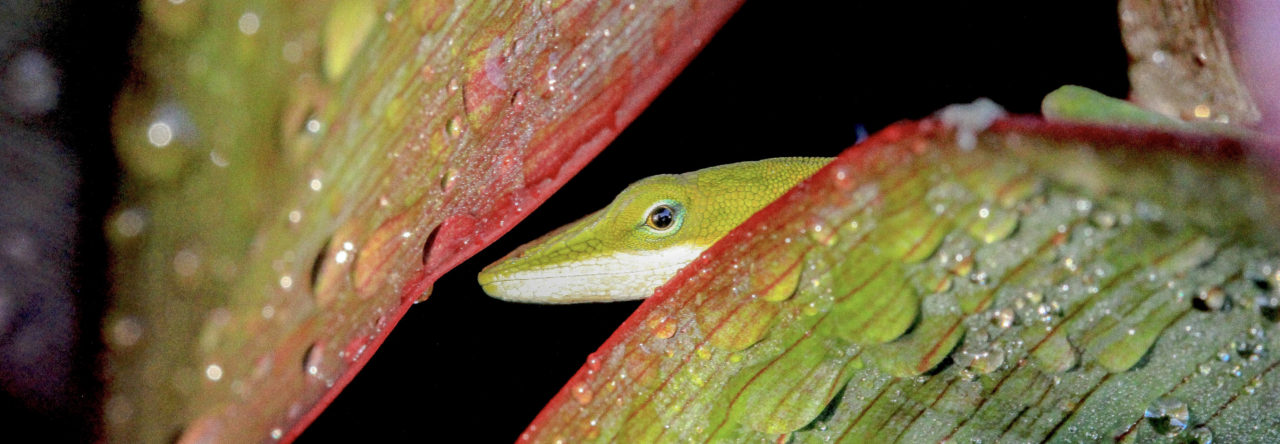 Jamaican giant anole (Anolis garmani) – one of the many non-native anoles you may see in Miami, FL.
Jamaican giant anole (Anolis garmani) – one of the many non-native anoles you may see in Miami, FL.
In 2018 it will be nearly ten years since the last Anolis symposium was held at the Museum of Comparative Zoology at Harvard University. Given the rapid advances and exciting new discoveries in Anolis biology, it’s time to organize the 7th Anolis symposium! So, with this official announcement, please mark the weekend of March 17-18th 2018 in your calendars to come and visit the wonderfully tropical lizard-world of Miami, FL!
The aim of the symposium is to bring together Anolis biologists from diverse backgrounds to share their excitement and discoveries for these marvelous lizards. In this symposium, we hope to foster cross-disciplinary collaborations of people working with anoles and to broaden our general understanding of their biology and natural history. Miami was chosen not only for its spectacular anole diversity, but because of its ready access to anolologists living outside of mainland United States.
Miami, FL, is an ideal place in the USA to host this meeting! Over the past 100 years, eight species of Caribbean anoles have joined one native species in becoming established in south Florida. This meeting will be held on the weekend of March 17-18th 2018, which broadly overlaps with at least one weekend of the Spring Break holiday for most US schools, and does not conflict with other major meetings as far as we’re aware. We hope that this will facilitate good attendance! The symposium will be held at the Fairchild Tropical Botanic Gardens, which is home to a diverse community of exotic lizards, including six (!) species of anoles (read more about them here and on Anole Annals here!).
This post serves as a ‘save the date‘ – stay tuned the Symposium page for more information on conference registration, abstract submission for oral and poster presentations, and article submission for the Anolis Newsletter VII.
 Puerto Rican crested anoles (A. cristatellus) in Fairchild Tropical Botanic Gardens
Puerto Rican crested anoles (A. cristatellus) in Fairchild Tropical Botanic Gardens
























